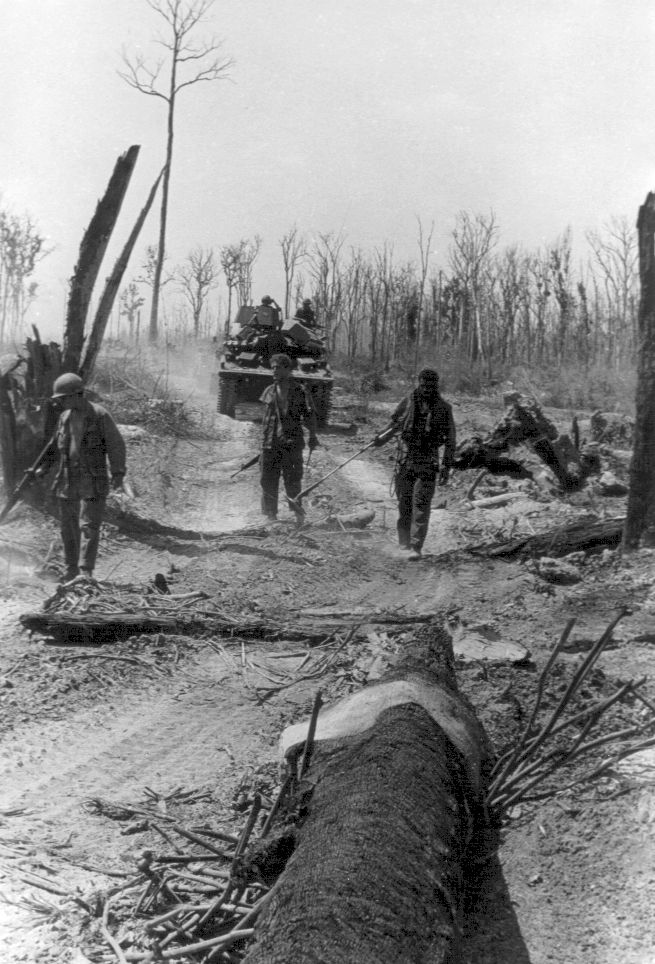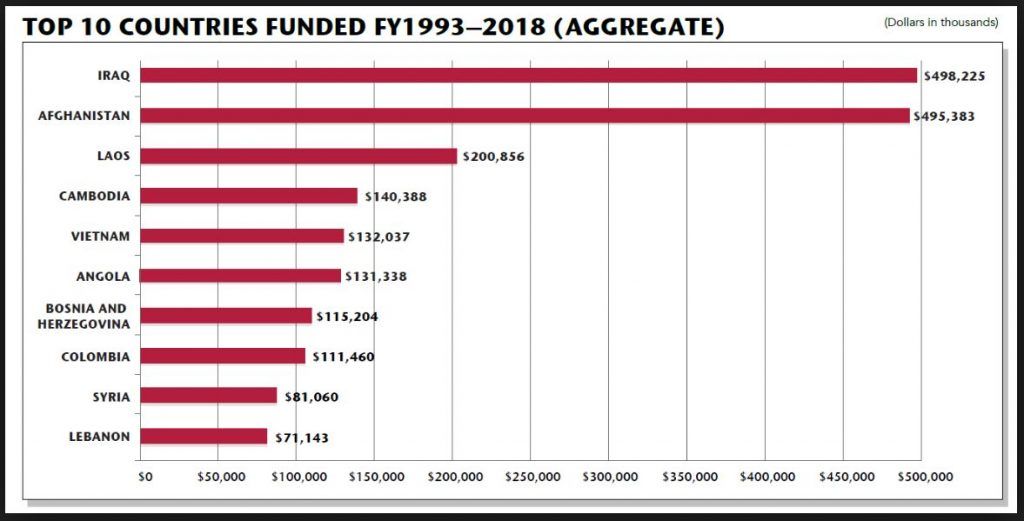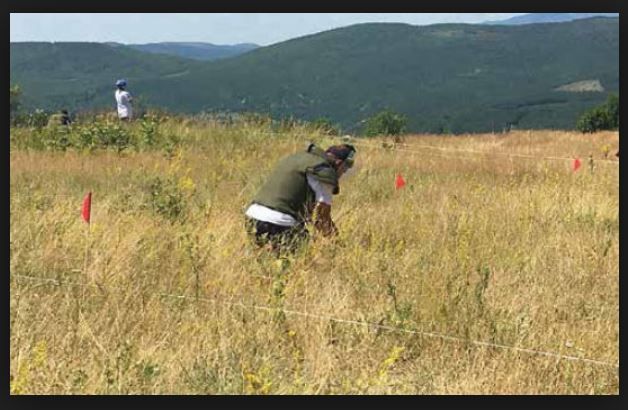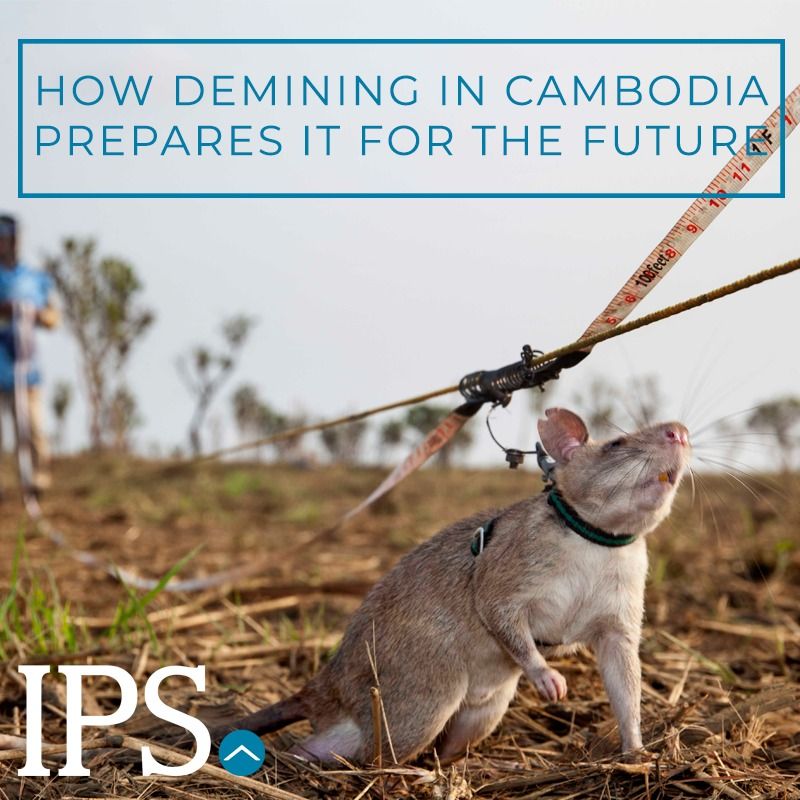Cambodia is an off the beaten path route for travelers and backpackers. This small country in Southeast Asia is often part of any Asian Tour. While not as popular as Thailand or Vietnam, it’s rich history makes it an interesting place to visit. Part of its history is the wars that razed the country in the ’80s. These wars resulted in casualties, amputees, and land mines. Continuous demining efforts in Cambodia is underway. Traveler safety and sustained economic growth are the main focus of these projects.
Demining in Cambodia

Unexploded Ordnance (UXO) are explosive weapons that did not detonate on impact. The US Forces dropped an estimated half a million tons of UXO during the Indochina War. The Vietnam War of the 70s and the Khmer Rouge in the 80s left the landmines in the country. They are below the surface of the ground and detonates upon contact of a person or a vehicle.
These explosive devices are in almost all areas of the country. A greater part of it is along the Thailand border and in the countryside. The Vietnam military forced Khmer Rouge to the Thai border. The forces built land mines to deter Khmer Rouge into going back to Cambodia land. This resulted in a 750 km border rigged with land mines along the Cambodia-Thai border.
More land mines were built during the civil war. Three decades of war left Cambodia with millions of casualties. Ther are also amputees and land that cannot be used. The threat of undiscovered explosives is always a cause of concern.
Adverse Effects of Land Mines
Cambodia has recovered its economy in the past decade. This is largely due to the help of foreign investments and foreign aid. But, the effects of the war still linger in the country.
Casualties and Amputees
The wars and political unrest left more than 3 million casualties and about 50,000 amputees. Cambodia has the highest rate of land mine victims in the world. Most of the victims died on the spot when they trip on explosives. Some are casualties who died in remote areas from lack of medical facilities, trained rescue workers or untreated infections.
Cambodia Mine Victim Information System reported 64,694 victims from 1979-June 2017. From that number, 31% died instantly. Injuries and amputees are 55%, roughly 25,000. About 81% of victims are men, and 9% are boys below 18 years old.
Social and Socioeconomic Consequences
Agriculture is a major industry in Cambodia. The threat of landmines makes large lands unfit for farming or housing space. For rural communities that rely on the land for income, this affects their livelihood.
Losing a family member to land mines means one less member to work for a living. A loss of family member to death or dismemberment means loss of income. For a low-income family, this means an inability to raise kids and provide education.
Official records point to poverty as the leading cause of landmine injuries. 38% of the injuries are from those who tampered with known land mines to scrap and sell the metal. 56% percent came from rural families in affected areas. These victims are just doing their daily routine like farming and working in the forests. Removing these landmines are important to lessen future accidents and death.
The Government’s efforts at Demining in Cambodia

Over 1M landmines and over 3M explosives are discovered and removed from 1992 to 2018. About 1,800 sq. km of land is cleared of explosives. Cambodia joined the Anti-Personnel Mine Ban Convention in 1990. Together with foreign aids, the government aims to rid the country of land mines by 2025.
Departments and Organizations responsible for the Demining in Cambodia Activities
There are 3 organizations tasked to investigate and clear the land of explosives. Among these organizations are:
Cambodia Mine Action Committee (CMAC)
The Cambodian Mine Action Centre (CMAC) is the leading demining organization in Cambodia. They are organized in 1992 by the United Nations Transitional Authority in Cambodia (UNTAC). They determined that landmines pose a risk to the repatriation of refugees. In 2000, CMAC became recognized as an autonomous organization. Their projects include landmine awareness, field information, and clearance. They currently have 2,000 staff. CMAC hold offices in Phnom Penh and 6 other provincial demining centers.
Cambodian Mine Action and Victim Assistance Authority (CMAA)
CMMA was established in 2000 under Royal Decree 177. It aims to regulate, coordinate, and track the demining activities of various organizations. The group also provides help to victims of landmines as provisioned in the laws of:
- Anti-Personnel Mine Ban Convention
- UN Convention on the Rights of People with Disability
- 2009 Law on the Protection and Promotion of the Rights of Persons with Disabilities.
Royal Cambodian Armed Forces (RCAF)
CMAC partnered with the Royal Cambodian Armed Forces in its 10-year demining project. Around 250 RCAF retired members and staff of RCAF help CMAC’s demining activities.
Mines Advisory Group (MAG)
Mines Advisory Group has been working in Cambodia since 1992. MAG helped in clearing the country of its landmines in all 25 provinces. They use manual and mechanical resources, depending on the type of ammunition. They also use trained dogs to speed up clearance operations. And they deploy roving teams to areas with reported explosive contamination.
HALO Trust (Hazardous Area Life-support Organization)
HALO Trust is a non-sectoral organization that aims to remove the debris left by wars. Established in 1991, HALO is the first demining organization in the country. They helped clear almost 50% of all landmines and UXO. The organization now focuses on 21 border districts with the highest landmine accidents.
Cambodia Self-Help Demining in Cambodia (CSHD)
CHSD is founded in 2007 and has about 25 deminers. Their team focus on low priority areas in the country. To date, they have cleared around 100 villages and 3 sq. km. of land.

Results of Demining Efforts
With roughly 7 groups working together, incidents lessened in the last few years. The groups all aim to rid Cambodia of land mines and explosives left over from the wars.
CMAC reported more than 20% drop in fatalities yearly and over 1,500 km of cleared land from 1990 – 2017. In 2017, they cleared over 8,600 hectares of land mines. Almost 37,448 of explosives are found. And in 2018, they removed 45,500 explosives from nearly 9,000 hectares of land.
Cambodia aims to clear approximately 2,125 sq. km of land from explosives by 2019. The main goal is for Cambodia to be completely free of landmines by 2025. They also need to reduce the number of casualties by 10 per year. And most importantly, to improve the lives of people affected by the land mines.
What Does The Future Look Like Once Demining in Cambodia is Complete?
Land mines affect the country’s growth in so many ways. Land contaminated by explosives left by war poses a risk to the people and their livelihood. Uncleared land is unfit for agriculture and housing. It prevents the building of infrastructures like roads and irrigation. And victims suffer the effects of lack of education, training, and employment.
Once the government’s efforts succeed, lands are ready for development. There will be more land to use in building farm-to-market roads and irrigation. More agricultural land to use will result in a higher amount of produce and good income for the locals and boost Cambodia’s economic development.
Major foreign investments come to the country each year. With land completely free from the remnants of war, it is going to be a clear path ahead for Cambodia and its people.
What Demining in Cambodia Brings to the Real Estate Market
The real estate industry in Cambodia is on the rise. The property market has enjoyed a steady upward trend in the last 10 years and it is expected to continue. Housing and commercial spaces are being built, and new developments are being introduced in almost all provinces in the country.
With the demining efforts currently underway, more land will be open and ripe for development. The price of land will stabilize as supply becomes at par with the current demand. Foreign investments will continue as new commercial spaces become available. Once Cambodia is completely free from land mines and explosives, it will open a whole new opportunity of growth for this small, yet promising, country.

